Themed collection Editor’s Choice collection: Organic Electronics

Editor’s Choice: “Organic Electronics: What a Journey!”
Scientific Editor for Materials Horizons Professor Jean-Luc Brédas (The University of Arizona, USA), introduces this Editor’s Choice collection on organic electronics.

Mater. Horiz., 2023,10, 4660-4661
https://doi.org/10.1039/D3MH90049E
Engineering of flat bands and Dirac bands in two-dimensional covalent organic frameworks (COFs): relationships among molecular orbital symmetry, lattice symmetry, and electronic-structure characteristics
An effective framework for the band engineering in 2D covalent organic frameworks is revealed by describing the fundamental relationships among the electronic structures, the lattice symmetries, and the frontier molecular orbitals of building units.
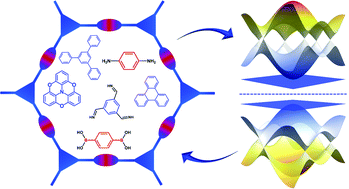
Mater. Horiz., 2022,9, 88-98
https://doi.org/10.1039/D1MH00935D
High-performance asymmetric electrode structured light-stimulated synaptic transistor for artificial neural networks
In this work, an asymmetric electrode structure of the light-stimulated synaptic transistor (As-LSST) is present. The As-LSST has excellent electrical characteristics, photosensitivity, low power and multiple biosynaptic functions.

Mater. Horiz., 2023,10, 4438-4451
https://doi.org/10.1039/D3MH00775H
Stable organic electrochemical neurons based on p-type and n-type ladder polymers
Rigid ladder-type conjugated polymers enable the development of stable and high-performance organic electrochemical transistors (OECTs) and complementary OECT-based amplifiers for brain-inspired artificial neurons.

Mater. Horiz., 2023,10, 4213-4223
https://doi.org/10.1039/D3MH00858D
Spectroscopic analysis of vibrational coupling in multi-molecular excited states
Temperature dependent luminescence of multi-molecular excited states like excimers and charge-transfer states is described by a Frank–Condon model based on an inter-molecular vibrational mode and different potentials for the ground and excited state.
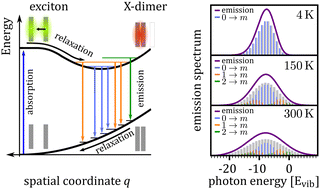
Mater. Horiz., 2023,10, 221-234
https://doi.org/10.1039/D2MH00829G
Ultrahigh energy storage performance of all-organic dielectrics at high-temperature by tuning the density and location of traps
An improved composite dielectric with an excellent high-temperature energy storage performance has been obtained by modulating the trap parameters.

Mater. Horiz., 2022,9, 3002-3012
https://doi.org/10.1039/D2MH00912A
A comprehensive picture of roughness evolution in organic crystalline growth: the role of molecular aspect ratio
The molecular aspect ratio of organic small molecules is shown to impact the roughness evolution during crystal growth through complementary experimental and computational studies.
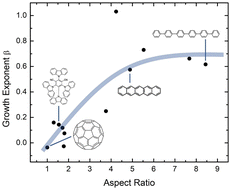
Mater. Horiz., 2022,9, 2752-2761
https://doi.org/10.1039/D2MH00854H
Achieving circularly polarized luminescence and large piezoelectric response in hybrid rare-earth double perovskite by a chirality induction strategy
A pair of 3D hybrid rare-earth double perovskites with large piezoelectric responses and CPL was constructed by introducing chirality. This study provides a strategy to prepare high-performance molecule-based piezoelectric and CPL materials.

Mater. Horiz., 2022,9, 2450-2459
https://doi.org/10.1039/D2MH00698G
Double-type-I charge-injection heterostructure for quantum-dot light-emitting diodes
Enforcing balanced electron–hole injection into the emitter layer of quantum-dot light-emitting diodes through a double-type-I heterostructure using polymer semiconductors maximizes the quantum efficiency over a wide current density range.
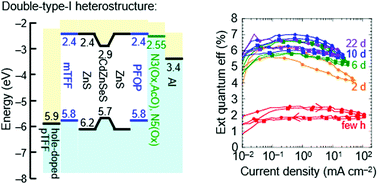
Mater. Horiz., 2022,9, 2147-2159
https://doi.org/10.1039/D1MH00859E
Heterojunction bilayers serving as a charge transporting interlayer reduce the dark current and enhance photomultiplication in organic shortwave infrared photodetectors
This work modifies the charge-transporting layer in organic photodiodes to a heterojunction bilayer. The bilayer design facilitates photomultiplication and suppresses the dark current to enhance detectivity and contrast in upconversion imagers.
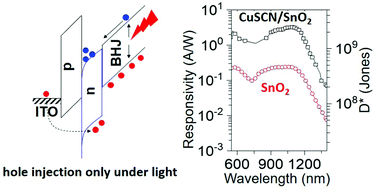
Mater. Horiz., 2022,9, 2172-2179
https://doi.org/10.1039/D2MH00479H
Universal electrode for ambipolar charge injection in organic electronic devices
Ambipolar transistors, i.e. transistors with symmetrical n- and p-type performances, open new avenues for the design and integration of high-density, efficient and versatile circuits for advanced technologies.
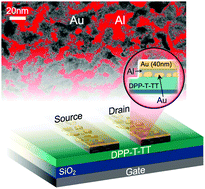
Mater. Horiz., 2022,9, 2138-2146
https://doi.org/10.1039/D1MH01845K
Structural insights into Lewis acid- and F4TCNQ-doped conjugated polymers by solid-state magnetic resonance spectroscopy
Polymer–dopant intermolecular interactions characterized by solid-state NMR and EPR spectroscopy techniques offer clues about the different doping mechanisms and efficiencies.
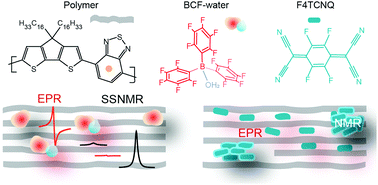
Mater. Horiz., 2022,9, 981-990
https://doi.org/10.1039/D1MH01574E
Backbone-driven host–dopant miscibility modulates molecular doping in NDI conjugated polymers
Molecular doping is the key to enabling organic electronic devices, however, the design strategies to maximize doping efficiency demands further clarity and comprehension.
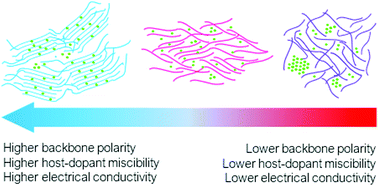
Mater. Horiz., 2022,9, 500-508
https://doi.org/10.1039/D1MH01357B
Bipolarons rule the short-range terahertz conductivity in electrochemically doped P3HT
In situ terahertz spectroscopy on electrochemically doped P3HT reveals the impact of polarons and bipolarons on the short-range conductivity.
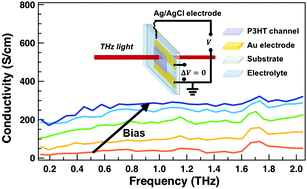
Mater. Horiz., 2022,9, 482-491
https://doi.org/10.1039/D1MH01343B
Short and long-range electron transfer compete to determine free-charge yield in organic semiconductors
Marcus theory explains photoinduced electron transfer from donor molecules to a fullerene host when all microstates are included, and formation of free charge competes with charge-transfer states.

Mater. Horiz., 2022,9, 312-324
https://doi.org/10.1039/D1MH01331A
Enantiopure 2-(2-ethylhexyl)dinaphtho[2,3-b:2′,3′-f]thieno[3,2-b]thiophenes: synthesis, single-crystal structure and a surprising lack of influence of stereoisomerism on thin-film structure and electronic properties
Starting from a chiral resolution of 2-ethylhexanoic acid followed by conversions of functional groups without interfering with the enantiopurity, we have successfully introduced an enantiopure 2-ethylhexyl group on to dinaphtho[2,3-b:2′,3′-f]thieno[3,2-b]thiophene (DNTT) via a Negishi-coupling reaction to synthesize 2-(R)-(2-ethylhexyl)- and 2-(S)-(2-ethylhexyl)-DNTT (R- and S-EH-DNTT, respectively).
![Graphical abstract: Enantiopure 2-(2-ethylhexyl)dinaphtho[2,3-b:2′,3′-f]thieno[3,2-b]thiophenes: synthesis, single-crystal structure and a surprising lack of influence of stereoisomerism on thin-film structure and electronic properties](/en/Image/Get?imageInfo.ImageType=GA&imageInfo.ImageIdentifier.ManuscriptID=D1MH01119G&imageInfo.ImageIdentifier.Year=2022)
Mater. Horiz., 2022,9, 444-451
https://doi.org/10.1039/D1MH01119G
Design and synthesis of chromophores with enhanced electro-optic activities in both bulk and plasmonic–organic hybrid devices
By tuning donor strength, we produce an organic electro-optic chromophore with high hyperpolarizability, low absorption, and excellent electro-optic activity, which is demonstrated in a plasmonic–organic hybrid modulator with near record low VπL.
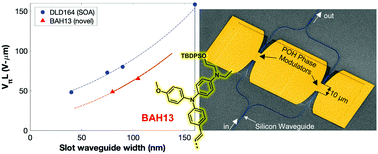
Mater. Horiz., 2022,9, 261-270
https://doi.org/10.1039/D1MH01206A
Substituent-dependent absorption and fluorescence properties of perylene bisimide radical anions and dianions
Custom-built flow cells for absorption and fluorescence spectroelectrochemistry provide details on optical transitions, transition dipole moments and fluorescence quantum yields of five perylene bisimides as well as their radical anions and dianions.
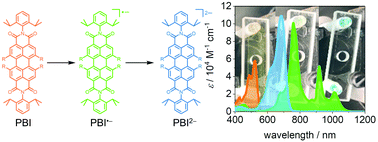
Mater. Horiz., 2022,9, 350-359
https://doi.org/10.1039/D1MH01019K
Detecting triplet states in opto-electronic and photovoltaic materials and devices by transient optically detected magnetic resonance
We present a transient ODMR technique to detect and distinguish triplet states in opto-electronic and photovoltaic materials and devices.
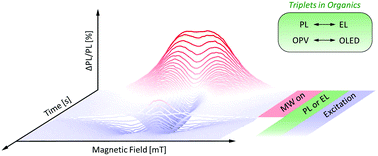
Mater. Horiz., 2021,8, 2569-2575
https://doi.org/10.1039/D1MH00999K
Visible-blind ultraviolet narrowband photomultiplication-type organic photodetector with an ultrahigh external quantum efficiency of over 1 000 000%
The new concept of fabricating high-performance visible-blind narrowband UV photomultiplication-type organic photodetectors provides a necessary prerequisite for flexible wearable UV monitoring and other promising applications.

Mater. Horiz., 2021,8, 2293-2302
https://doi.org/10.1039/D1MH00776A
Tetrazine molecules as an efficient electronic diversion channel in 2D organic–inorganic perovskites
Taking advantage of an innovative design concept, we present the synthesis of two novel two-dimensional (2D) hybrid organic–inorganic halide perovskites incorporating for the first time 100% of a photoactive tetrazine derivative as the organic component.
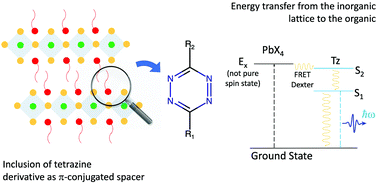
Mater. Horiz., 2021,8, 1547-1560
https://doi.org/10.1039/D0MH01904F
Infrared spectroscopy depth profiling of organic thin films
FDD-IR spectra combined with soft plasma etching is introduced to study organic film property along film-depth. It provides insights into different kinds of organic films, all equipment and methodology are easily accessible in laboratories worldwide.
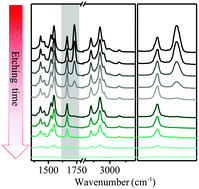
Mater. Horiz., 2021,8, 1461-1471
https://doi.org/10.1039/D0MH02047H
Novel butterfly-shaped organic semiconductor and single-walled carbon nanotube composites for high performance thermoelectric generators
Curved organic small molecule and single-walled carbon nanotube composites with enhanced interactions for thermoelectric materials.
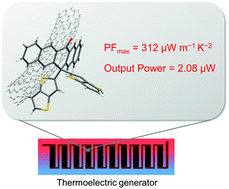
Mater. Horiz., 2021,8, 1207-1215
https://doi.org/10.1039/D0MH01679A
Anisotropic 2D excitons unveiled in organic–inorganic quantum wells
Hybrid layered metal chalcogenide crystalline polymer hosts strongly anisotropic two-dimensional excitons with large binding energies.
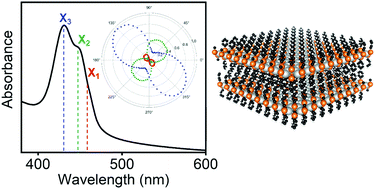
Mater. Horiz., 2021,8, 197-208
https://doi.org/10.1039/C9MH01917K
Acid dyeing for green solvent processing of solvent resistant semiconducting organic thin films
The alcohol and water-based processing of a perylene diimide (PDI) organic semiconductor into large area and solvent resistant films is reported.
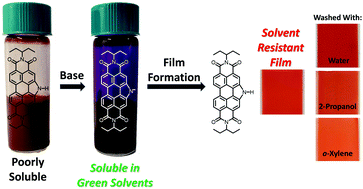
Mater. Horiz., 2020,7, 2959-2969
https://doi.org/10.1039/D0MH00785D
Real-time monitoring of trap dynamics reveals the electronic states that limit charge transport in crystalline organic semiconductors
Access to the dynamics of trap annihilation/generation resulting from isomer rearrangement identifies the performance-limiting processes in organic thin-film transistors.
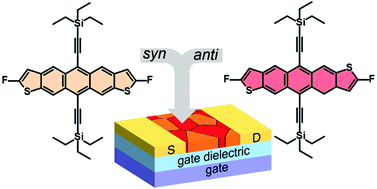
Mater. Horiz., 2020,7, 2390-2398
https://doi.org/10.1039/D0MH00706D
Monitoring supported lipid bilayers with n-type organic electrochemical transistors
An n-type, accumulation mode, microscale organic electrochemical transistor monitors the activity of a pore-forming protein integrated into a lipid bilayer.
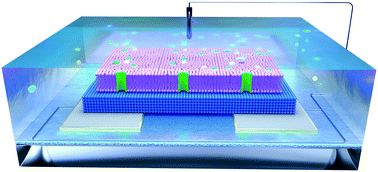
Mater. Horiz., 2020,7, 2348-2358
https://doi.org/10.1039/D0MH00548G
Temperature dependence of the spectral line-width of charge-transfer state emission in organic solar cells; static vs. dynamic disorder
The origin of line-widths of electro-luminescent charge-transfer states in photovoltaic blends is evaluated and discussed in terms of vibrational theory.
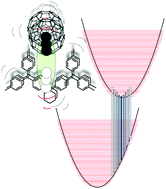
Mater. Horiz., 2020,7, 1888-1900
https://doi.org/10.1039/D0MH00385A
Soluble poly(4-fluorostyrene): a high-performance dielectric electret for organic transistors and memories
Poly(4-fluorostyrene) with strong charge storage capability is introduced as an electret in a field-effect transistor to improve device performance and memory stability.

Mater. Horiz., 2020,7, 1861-1871
https://doi.org/10.1039/D0MH00203H
About this collection
Materials Horizons Scientific Editor, Professor Jean-Luc Brédas (The University of Arizona, USA), has selected some outstanding recent manuscripts related to the topic of organic electronics for this Editor’s Choice collection. To celebrate the 50th anniversary since the first reports of TTF-TCNQ, this collection gathers some of the most recent and impactful articles published in Materials Horizons on the topic of organic electronics over the past couple of years. We hope that this collection highlights the remarkable diversity and impact of organic electronics research.
Congratulations to all featured authors!